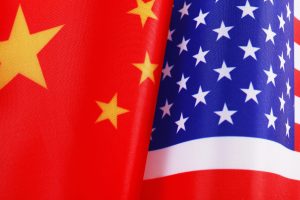The Diplomat author Mercy Kuo regularly engages subject-matter experts, policy practitioners, and strategic thinkers across the globe for their diverse insights into U.S.’ Asia policy. This conversation with Prof. Francis J. Gavin – Giovanni Agnelli Distinguished Professor and the inaugural director of the Henry A. Kissinger Center for Global Affairs at Johns Hopkins SAIS and author of “Thinking Historically: A Guide to Statecraft and Strategy” (Yale 2025) – is the 481st in “The Trans-Pacific View Insight Series.”
For practitioners of statecraft and strategy, how is a historical approach different?
Thinking historically forces us to surface and better understand the assumptions – explicit and unspoken – that go into making difficult, consequential political and strategic choices about an uncertain, unknowable future. A deeper familiarity with the past generates greater insight into the causes, actors, and agents that matter most in shaping our world. It makes us recognize the importance of divergent perspectives – how different people in different places at different times understand the world and what matters in very different ways.
Thinking historically generates an empathy, if not sympathy, for those who must make these hard choices. For those practitioners of statecraft and strategy, the past provides an unending source of knowledge and wisdom through understanding how people made equally tough decisions in the past. A historical mindset, most importantly, helps us ask better questions and challenges our own set ideas about the world.
How did events in China and Northeast Asia drive American grand strategy and perceptions of communist China as a threat?
America’s perceptions and attitudes towards China have vacillated wildly throughout the country’s 250-year history. At times, America has deeply admired China, its history and its people, and seen it as a promising partner. At other times, China has been viewed as a dangerous ideological and political rival. Indeed, America’s attitude towards China since 1945 has dramatically changed several times – from ally to hated foe, to “frenemy,” back to rival and adversary – and may change again. As two of the most consequential actors in global affairs, China and the United States will likely continue to hold contradictory views of each other – fascination and fear, admiration and enmity, fear and hope.
Analyze the historical forces of globalization that propelled China’s meteoric rise in the 1980s.
Most of our histories of the post-1945 world focus on the Cold War, but often miss the international economic story. Beginning in the 1970s and accelerating in the 1980s, the international economic system created during and after World War II, which we roughly refer to as “Bretton Woods,” broke down. The Bretton Woods system had focused on managed trade, capital and investment controls, national development and regional integration, and largely excluded the PRC.
China took advantage of the new, often chaotic, but open post-Bretton Woods system to attract investment and pursue trade-oriented growth, leading to massive increases in its economy. This post-Bretton Woods system – what some have termed neoliberalism – has been and remains under great stress and challenge, and it is unclear what kind of new economic order will arise in its place and what China and America’s place in it might be.
What is the role of history in geopolitics?
I would turn this question around to say: what is the role of geopolitics in history? From the late 19th century throughout much of the 20th century, geopolitics was a driving feature of world politics. Nations faced the age-old challenge of providing adequate food, fuel, shelter, and security to their citizens in a world where populations were dramatically increasing and basic resources were scarce. This put a priority on states acquiring territory, formal and informal empire, and markets, which in turn drove international rivalry, imperialism, and great power war.
History should make us recognize that these historical forces have dramatically shifted – populations in the most developed states are stable and even declining, food and energy production have massively increased, and ideas and innovation, rather than land and territory, are now the foundations of state power.
The global problems the world faces today are what I term the “problems of plenty” – our extraordinary economic prosperity over the past century has tamed steep scarcities that drove conflict in the past, but are now generating new, terrifying crises around climate, migration, inequality, emerging technology, and public health. The digital revolution, which makes all the world’s information available to everyone on a handheld device, has also led to crippling disinformation, social dislocation, and deep political polarization.
States will always compete for territory, be it out of interest, fear, or honor. But the most existential problems we face have little to do with geopolitics traditionally understood. Which is a reminder of another power of thinking historically – it can help us understand when and why the present and the future are/will be different from the past.
Explain the application of thinking historically in analyzing China-U.S. strategic competition and its implications for U.S. statecraft and strategy.
Too often, our contemporary analyses of China-U.S. relations have a deterministic cast, based on crude, stylized histories and parsimonious theories of the world, suggesting that tensions, rivalry, and even conflict between China and the United States are inevitable and unavoidable. History reminds us that nothing is cast in stone, and that wise statecraft and strategy can chart a far different course. The disastrous consequences of the global COVID-19 pandemic reveal the costs of the enmity between the two leading powers, China and the United States; likewise, a war between the two would be a catastrophe.
At the height of the Cold War, the Soviet Union and the United States, whose ideological and geopolitical rivalry was far deeper and more insoluble, found a way to cooperate to eliminate smallpox (a disease that killed tens of millions of people) and limit nuclear proliferation by pursuing the Nuclear Nonproliferation Treaty. Learning from this history could help China and the U.S. to cooperate to solve similar pressing, shared global challenges today, despite their rivalry.





























